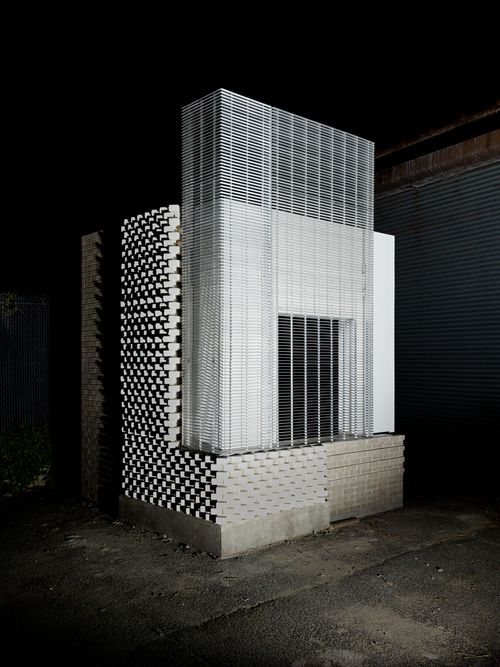ARCH289578
November 1983
Archetypes: Architectural mock-up for the Artes Amant art gallery, Brooklyn, New York, United States
PH2019:0003:028
2017
Archetypes: Architectural mock-up for the Artes Amant art gallery, Brooklyn, New York, United States
Actions:
PH2019:0003:028
Archetypes: Architectural mock-up for the Artes Amant art gallery, Brooklyn, New York, United States
PH2019:0003:029
2017
Archetypes: Architectural mock-up for the Artes Amant art gallery, Brooklyn, New York, United States
Actions:
PH2019:0003:029
PH1984:0925
design d'intérieur
1908 or after
design d'intérieur
documents textuels
AP206.S2.096
circa 2000s
documents textuels
circa 2000s
documents textuels
DR2004:1004:001
documents textuels
documents textuels
DR2004:1007:001
documents textuels
photographies
Quantité:
11 slide(s)
ARCH276975
1970s
photographies
Quantité:
11 slide(s)
1970s
documents textuels
AP075.S3.SS2.119
2007
Request for proposal for Bateman Art and Environment Education Centre
Actions:
AP075.S3.SS2.119
documents textuels
2007
Projet
AP018.S1.1975.PR08
Description:
This project series documents the design and planning for the third stage of the expansion of the Art Gallery of Ontario (AGO) in Toronto in 1975. The office identified the project number as 7515. This proposed project conceived the further expansion of the AGO after the completion of Stage I and Stage II, which began in 1969 and 1972 respectively. Stage III would build upon completed areas of the building to enlarge gallery, office, performance, and activity spaces. Among the proposed spaces were the satirical art gallery, a Canadian sculpture gallery, a staff lounge, and the enlargement of the library. The largest addition would be to the south of the gallery, directly west of the Grange mansion. The project would also include continuation of exterior walls and masking of the mechanical penthouse on top of the gallery. At the beginning of December 1975, the AGO suddenly asked Parkin Architects Planners to halt design work on the Stage III expansion, citing a lack of financial stability as the cause. However, conversation between the AGO and Parkin on resuming the project continued for years after. It should be noted that while AGO project contracts were originally given to John B. Parkin Associates, John C. Parkin continued the project under his new firm, Parkin Architects Planners, after parting ways with partner John B. Parkin in 1971. The project is recorded through drawings and textual records dating from 1973-1976. The drawings show preliminary ideas and design work for the project, while the textual records consist of correspondence and meeting minutes.
1973-1976
Art Gallery of Ontario, Stage III Expansion, Toronto (1975-1976)
Actions:
AP018.S1.1975.PR08
Description:
This project series documents the design and planning for the third stage of the expansion of the Art Gallery of Ontario (AGO) in Toronto in 1975. The office identified the project number as 7515. This proposed project conceived the further expansion of the AGO after the completion of Stage I and Stage II, which began in 1969 and 1972 respectively. Stage III would build upon completed areas of the building to enlarge gallery, office, performance, and activity spaces. Among the proposed spaces were the satirical art gallery, a Canadian sculpture gallery, a staff lounge, and the enlargement of the library. The largest addition would be to the south of the gallery, directly west of the Grange mansion. The project would also include continuation of exterior walls and masking of the mechanical penthouse on top of the gallery. At the beginning of December 1975, the AGO suddenly asked Parkin Architects Planners to halt design work on the Stage III expansion, citing a lack of financial stability as the cause. However, conversation between the AGO and Parkin on resuming the project continued for years after. It should be noted that while AGO project contracts were originally given to John B. Parkin Associates, John C. Parkin continued the project under his new firm, Parkin Architects Planners, after parting ways with partner John B. Parkin in 1971. The project is recorded through drawings and textual records dating from 1973-1976. The drawings show preliminary ideas and design work for the project, while the textual records consist of correspondence and meeting minutes.
Project
1973-1976



![Interior view of the Director's office, Dagteeken-en Kunstambachtschool voor Meisjes [Day Art and Art Handiwork School for Girls] (also known as the Teekenschool v Meisjes [Art School for Girls]), 16 Gabriël Metsusstraat, Amsterdam, Netherlands](/img-collection/8xAg8fJ57s_CJF2hsklAoyESSds=/500x666/361102.jpg)